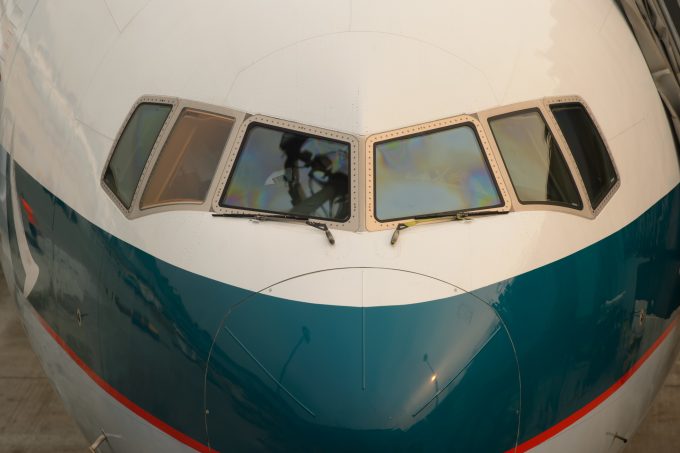Shipping disruption and e-commerce demand driving up airfreight rates
The start of the airline summer season this month is likely to hit airfreight rates ...

Cathay Pacific Group suffered a “drastic” reduction in cargo volumes last month.
And a drop in volumes and rates ex-Hong Kong could be the result of Beijing’s tighter export controls favouring mainland airports.
Cathay Pacific and Cathay Dragon’s March cargo volumes fell 35.6% to 119,277 tonnes, while revenue freight tonne km (RFTKs) fell 29%, year on year, and capacity, in available freight tonne km (AFTKs), was down 37.2%.
Group CCO Ronald Lam said: “While we continue to operate a full freighter schedule, our passenger flight reductions have had a significant impact on our overall cargo capacity.”
The airline is set to run a skeleton passenger schedule, just 3% of normal capacity, this month and next – representing fewer than 1,000 passengers a day, compared with pre-coronavirus daily levels of 100,000.
“We added cargo capacity in the form of more freighter flights, as well as 257 pairs of cargo-only passenger flights in March,” said Mr Lam.
“We currently expect to operate a similar number in April, including on some long-haul routes such as the south-west Pacific, where air cargo capacity is extremely tight.”
He said volumes from Hong Kong had rebounded in March after mainland manufacturing came back online, but transhipment cargo was hit by lockdowns in other markets, particularly the Indian sub-continent.
“Our commodity mix also changed, with a surge in medical supplies, such as face masks, protective clothing, hand sanitiser and pharmaceutical products,” noted Mr Lam.
Hong Kong International Airport (HKIA) reported similar trends last month, with cargo throughput dropping 12.4% to 378,000 tonnes. Traffic to and from South-east Asia and Europe took the biggest hit.
“The decline in cargo throughput was mainly attributed to 42% decrease in transhipments. Exports was stable while imports grew slightly, by 1% year on year,” HKIA added.
According to analysis by Freight Investor Services (FIS), shipments of personal protective equipment (PPE) are being “forced through mainland airports”, rather than transhipped in Hong Kong, because Beijing clamped down on “not fit-for-purpose equipment being bought with blank cheques by anxious governments”.
Using TAC Index data, FIS said there had been a “sudden capitulation of Hong Kong prices”, with rates to Europe down 45 cents to $4.66. On the other hand, there was a 44-cent climb in China to Europe, now at $6.66, with Shanghai to Europe surging a further $1.32, to $8.65.
Forwarders told The Loadstar they hadn’t noticed a big drop in Hong Kong rates, however, with one saying:“Intra-Asia rates have slightly reduced due to closure of countries, but long-haul markets like US, Europe, Middle East and Africa remain the same.”
Meanwhile, FIS said although there had been a 19-30% drop in cargo volumes year on year, “recent buying sprees at re-opened stores in China (and some in the west) gives us hope for downstream demand”.
Comment on this article